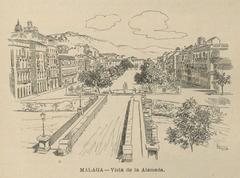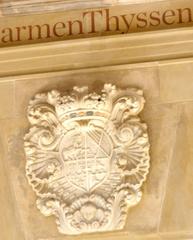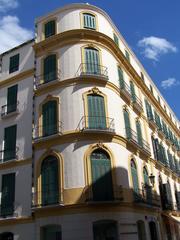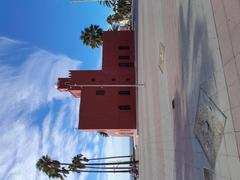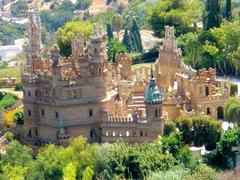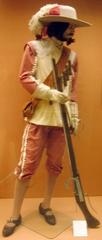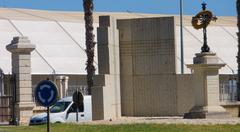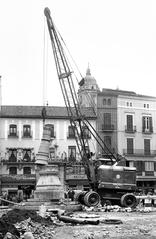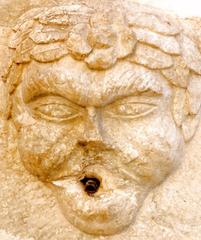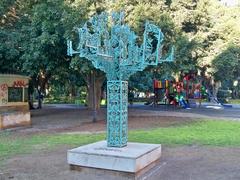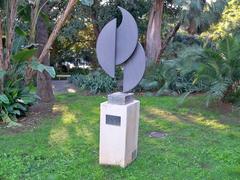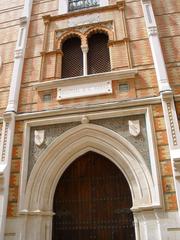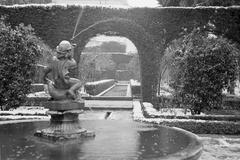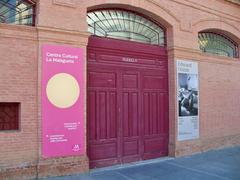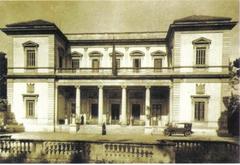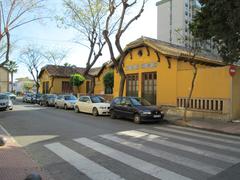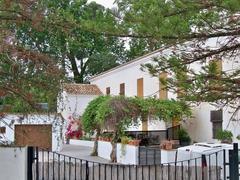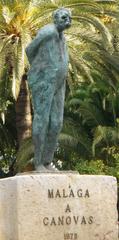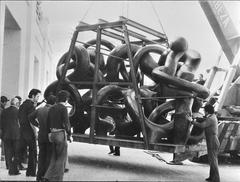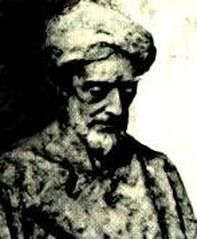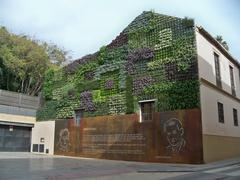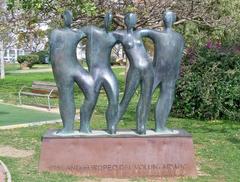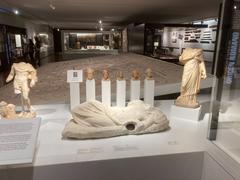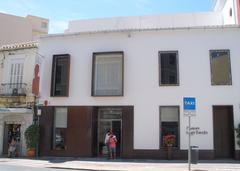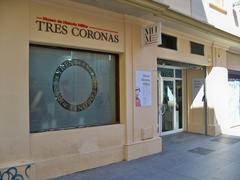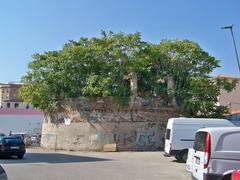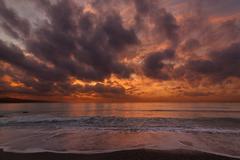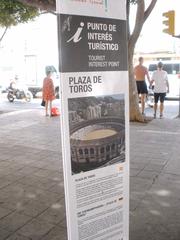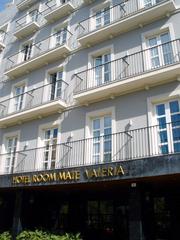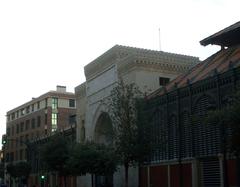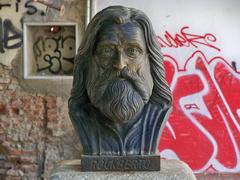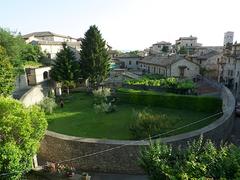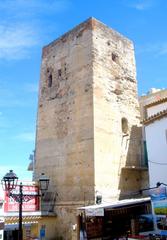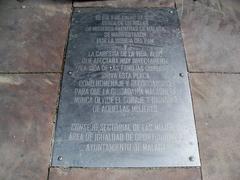Villa Cele-María Málaga: Visiting Hours, Tickets, and Comprehensive Travel Guide
Date: 14/06/2025
Introduction: Discovering Villa Cele-María and Málaga’s Rich Heritage
Villa Cele-María, located on the elegant Paseo de Sancha in Málaga’s La Caleta district and associated with the historic El Limonar neighborhood, is an architectural jewel that encapsulates the city’s dynamic transformation from ancient port to cosmopolitan center. Built by José María de Sancha in the late 19th century, this villa is a celebrated example of neomudéjar and eclectic styles that honor Andalusia’s Islamic heritage while embracing modern, bourgeois tastes (La Caleta – Wikipedia; El Mundo – Andalucía; e-a-a.com).
While Villa Cele-María remains a private residence and does not offer interior tours, its ornate façade and historical context make it a highlight of guided walking tours in Málaga. This guide provides detailed information on the villa’s history, architectural significance, practical visitor tips, and nearby attractions, ensuring an informed and enriching visit to one of Málaga’s most distinctive historical sites.
Málaga’s Historical Evolution: The Setting for Villa Cele-María
Ancient and Medieval Roots
Málaga’s history spans nearly 2,800 years, shaped by Phoenician, Roman, Islamic, and Christian civilizations. Founded as Malaka by the Phoenicians around 770 BCE, the city later flourished under Roman and Islamic rule, becoming a prominent port and cultural hub within Al-Andalus. The Christian conquest in 1487 initiated new urban and social transformations (History of Málaga – Wikipedia).
The 19th Century: Urban Expansion and Social Change
Industrialization and international trade in the 19th century propelled Málaga’s growth. The city expanded eastward, giving rise to elegant residential districts such as La Caleta and El Limonar, favored by the bourgeoisie and foreign elites. The transformation of La Caleta from a fishing settlement to a prestigious neighborhood was marked by landscaped avenues and stately homes (La Caleta – Wikipedia).
The Genesis of Villa Cele-María
Vision of José María de Sancha
A visionary engineer and urban planner, José María de Sancha played a key role in Málaga’s eastern expansion. He envisioned Paseo de Sancha as a modern boulevard lined with grand villas for the city’s elite. Villa Cele-María, built in the neomudéjar style and intended as Sancha’s family residence, became a prime example of this vision (El Mundo – Andalucía).
Architectural Highlights
The villa’s façade is adorned with glazed ceramic tiles, horseshoe arches, and intricate brickwork—hallmarks of the neomudéjar movement. Its palatial design echoes the Islamic legacy of Andalusia, while embracing the cosmopolitan sophistication of Málaga’s upper class (La Caleta – Wikipedia).
Practical Visitor Information
Visiting Hours and Tickets
- Interior Access: Villa Cele-María is privately owned and not open for public interior tours.
- Exterior Viewing: The façade can be admired from Paseo de Sancha at any time during daylight hours.
- Guided Tours: Several local operators offer walking tours that include Villa Cele-María as a featured stop.
Accessibility
- Location: Easily accessible via public transport, taxi, or on foot from Málaga’s city center.
- Mobility: Paseo de Sancha and surrounding areas are pedestrian-friendly, with some accommodations for reduced mobility.
Tips for Visitors
- Photography: Exterior photography is permitted from public areas.
- Best Times: Early morning or late afternoon for optimal lighting and fewer crowds.
- Respect: As a private residence, visitors should not attempt to enter gated areas.
Architectural and Cultural Significance
Eclectic and Neomudéjar Styles
Villa Cele-María’s design embodies Málaga’s eclectic architectural tradition, blending neomudéjar elements with modernista (Art Nouveau) influences. Key features include:
- Exposed brickwork and polychrome ceramics
- Horseshoe and pointed arches with alfiz frames
- Mirador (belvedere) facing the sea
- Ceramic panels crafted in Sancha’s own pottery workshop
These elements reflect not only Islamic artistic legacies but also the villa’s role as a statement of status and modernity (e-a-a.com).
Cultural Symbolism
The villa’s decorative motifs and the coat of arms of the Marquesa del Vall connect it to Málaga’s aristocratic traditions and multicultural history. It stands as a testament to the city’s layered identity, bridging its Phoenician, Roman, Islamic, and Christian pasts.
Villa Cele-María’s Legacy and Preservation
Urban Development Influence
Villa Cele-María was among the first detached villas on the eastern seafront, setting a precedent for garden-surrounded residences and influencing subsequent architectural trends in Málaga.
Heritage Status
Now protected as an architectural heritage site, Villa Cele-María remains largely intact despite urban development. Its craftsmanship and neomudéjar artistry attract scholars and tourists alike (La Caleta – Wikipedia).
Community and Educational Impact
The villa is a case study in local educational programs about architecture and urban history, and serves as a symbol for heritage preservation efforts in Málaga.
Exploring the Area: Nearby Attractions
- Palacio Miramar: A historic hotel with public dining.
- Alcazaba: Moorish fortress with panoramic city views.
- Gibralfaro Castle: Offers scenic vistas and historical exhibits.
- Museo Picasso Málaga: Showcasing works by Málaga’s most famous artist.
- Malagueta Beach: A popular urban beach within walking distance.
Self-guided walking tours of El Limonar and La Caleta offer further opportunities to explore Málaga’s “golden mile” of historic villas (thecrazytourist.com; fascinatingspain.com).
Frequently Asked Questions (FAQ)
Q: Can I visit the interior of Villa Cele-María?
A: No, interior visits are not available as the villa is a private residence. Exterior viewing is permitted at any time.
Q: Are tickets required?
A: No tickets are required for viewing the exterior. Guided tours including the villa may require booking and a fee.
Q: Is Villa Cele-María wheelchair accessible?
A: The surrounding area is accessible, but the villa itself is not open for tours.
Q: How do I get to Villa Cele-María?
A: Located at Paseo de Sancha nº 44, it is accessible by public transport, taxi, or car, with nearby parking.
Q: Are there guided tours?
A: Yes, several walking tours of Málaga’s eastern districts include Villa Cele-María.
Essential Visiting Tips
- Seasons: Spring and autumn offer the most pleasant weather and fewer crowds (Faraway Worlds).
- Events: Check for heritage open days or local festivals for special access or events (My Little World of Travelling).
- Local Cuisine: Sample Andalusian specialties in nearby cafés and restaurants.
- Respect Heritage: Follow guidelines, avoid trespassing, and support local artisans by purchasing crafts.
Visuals and Virtual Resources
- Official Málaga Tourism Website
- Local Guided Tours Including Villa Cele-María
- Villa Cele-María Photo Gallery
- Audiala App Download
Conclusion
Villa Cele-María is a vibrant emblem of Málaga’s multicultural heritage and architectural innovation. While its interior remains private, the villa’s stunning façade and setting amidst Málaga’s “golden mile” provide a meaningful encounter with the city’s golden age. Enhance your visit by joining guided tours, exploring nearby historical landmarks, and engaging with Málaga’s rich cultural landscape. For the latest updates on visiting hours, tickets, and tours, consult official tourism resources and consider downloading the Audiala app for personalized travel planning.
References & Further Reading
- History of Málaga – Wikipedia
- La Caleta – Wikipedia
- El Mundo – Andalucía
- 10 Best Architectural Buildings in Malaga, Spain – e-a-a.com
- Malaga Tourism Official Website
- Faraway Worlds – What to Know Before You Visit Malaga, Spain
- My Little World of Travelling – Festivals in Malaga
- Villa Cele-María Photo Gallery – Wikimedia Commons
